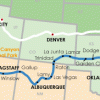Encounter of the concept “Travel for pleasure” and the Japanese word “KANKO(観光)”
公開日:
:
最終更新日:2016/11/25
Human LOGISTICS
Encounter of the concept “Travel for pleasure” and the Japanese word “KANKO(観光)”
Teramae Shuichi
Many tourism textbooks and dictionaries describe the timing when lexical tourism (tuurizumu) has been introduced in Japan is the Taisho era. However, the advent of tourism in the English dictionary and the like are the 1930s. And it was not also distinguished from the tour. In the pre-war newspaper article, the lexical Japanese tourism (tuurizumu) has not been used. In the Showa era, it has not been rarely used. Being frequently used, it is from in the 21st century. In the laws and regulations other than transportation, comprehensive recreation area or the like is coined, lexical Japanese kanko (means tourism) has been repellent. Finally, Tourism Nation Promotion Basic Law was to organize the terms. And, unified to lexical kanko. Researchers tend to use lexical tuurizumu as a vague kanko concept. It is funny thing. If the concept is clear, the choice of lexical ought not essential.
Keyword: sightseeing, tourism, tourist, hyphen-tourism, concepts and lexical, kanko, tuurizumu, tuurisuto
1 “travel” concept and “travel for the fun concept
The concept that people are moved away from the settlements was convergence to lexical travel in the English-speaking world, lexical “旅” in China, lexical “たび” in Japan. This movement is a movement for the military service, tax payment and so on. It was often not readily recognize the travel for fan. Upper-class travel had been recognized as active. After that, even the general public became to like to travel, it has been recognized passive one. To distinguish it from the person who performs this active travel (traveler), it generated the concept to the tourist the person who performs the tour, was generalized to until the 19th century. Inoue Masuzou thought tourist is used in place of the non-immigrant.
In the background, which was required to “concept and lexical” of “travel for fun”, there is the popularization. This is because the need to separate the socio-economic “Journey for fun,” the (tour) from the general of travel (travel) has occurred. The major factor is the tourism that target the tourist.
2 For “Google, Amazon”, expected to be to decipher the ancient documents
In order to perform the analysis of the concept and lexical, quantity analysis of lexical that was used in the Edo and Meiji period is essential. However, as Itasaka Yoko has pointed out in her writing “Edo of travel writing”, printed Japanese books is about 2 percent, the analysis is difficult. For the time being, it will be relying on the newspaper article search results. We hope to progress in the future of automatic decoding technology. It should be noted that, in order to study the concept “Travel for fun”, there is a need for analysis of the “fun” concept. Data analysis of the sensitivity of the brain is essential.
3 “lexical and concepts” seen from the dictionary
Table 1 Look in the dictionary lexical “tourist”, “tour”, “tourism”
year name Description
1862 English-Japanese pocket dictionary no distinction between travel and tour
1872 Japanese vocabulary To record the lexical yuuran(sightseeing)
1889 Japanese Sea of words Distinguish between the concept of the travel and sightseeing for the first time
1911 Japanese Dictionary To record for the first time the lexical kanko(tourism)
English-Japanese with phonetic symbols and commentary Figure Distinguish between the concept of the travel and tour
1912 The establishment of the Japan Tourist Bureau
1917 Model English-Japanese dictionary To record for the first time the lexical tourist
1927 New English-Japanese Dictionary Translated as tourism lexical tour
1930 The establishment of Board of Tourist Industry設立
1932 Large English-Japanese dictionary no distinction between tourism and tour
When lexical “travel, traveler, tour, tourist, tourism” have flowed into Japan, it was investigated whether the Japanese people to understand how the concept. Therefore, I will examine the “Japanese dictionary, English-Japanese dictionary,” which is collection to the Tokyo Metropolitan Central Library, I was organizing a lexical related to the “travel for fun”. (Table 1)
Lexical tour and travel have been flowing at the same time, in Japan. This time, the Japanese lexical travel and Japanese lexical sightseeing were both present in Japan. However, without distinguishing between travel and tour, it had been introduced. Therefore, Japanese people, to understand the difference between the concept travel and concepts tour is believed to take time. Tourism is a derivative of the tour along with the tourist. Derivatives of travel is the only traveler. Travelism corresponding to the tourism has not been established as lexical. In addition, in the English-Japanese dictionary, time lexical tourism has been published is delayed from the timing of the lexical “tour, tourist” has been published. To coin the Japanese lexical corresponding to the concept of this tourism, for the Japanese, it took time.
(1)Time before the Japan Tourist Bureau was established
Looking at the Japanese language dictionary, 1872 version of “vocabulary” is recorded lexical yuuran (sightseeing). It is considered that the concept “travel for fun” already exists. On the other hand, the dictionary has not recorded the lexical “kanko(tourism)”. Hence, lexical kanko seems to have not been used as representing the concept “Travel for fun”. 1889-1891 Edition Sea of words is to record sightseeing, errantry and journey. Therefore, it seems to be to distinguish between the concept of general travel and the concept of travel for fun. In the dictionary, errantry is commentary that it is outbound concept with a cross-border. In the 1896 edition of “Empire Encyclopedia”, errantry is no longer recorded.
Looking at the English-Japanese dictionary, 1814 edition of “Forest of English-Japanese” is the first-made English-Japanese dictionary in Japan. In this dictionary, lexical related with travel was not recorded. In 1862 and 1869 edition ” English-Japanese pocket dictionary “, although there is the distinction between travel and traveler, the distinction between the concept of travel and the tour is not complete. In Japanese dictionary that was published at the same time, it was recorded lexical yuuran (sightseeing) which was used as a concept “travel for fun”. Therefore, it is considered to have not deepened understanding of the lexical tour and tourist. In the 1887 edition of “English-Japanese with phonetic symbols and commentary figure”, lexical “tour, tourist, travel and traveler” were recorded. During this period, the concept of travel and tour had been distinguished. In this time, the concept of travel and tour had been distinguished. As a translation for the tourist, it has been coined the “itinerant”. With respect to tourist, it has been understood as those with cross-border concept. In the 1888 edition of “Webster dictionary,” lexical “sightseeing, tour, tourist, travel, traveller” had been recorded. In this dictionary, lexical traveller is translated as a person to do transaction of business and a traveller to receive or collect an order of goods”
(2)Period from 1912 to 1930 when the International Tourism Bureau was established
“Japan Tourist Bureau” has been established on the involvement of the government in 1912. 1911 edition “Dictionary” had recorded travel, pleasure, errantry, tourism, travel and traveler”. The lexical kanko (tourism) had been described as visit other countries to understand the state or the customs of people of other countries.
As Japanese dictionary, for the first time, the lexical kanko(tourism) was described as outbound concept with cross-border. Although lexical “kanko” had begun to fix, “tourist” representing the people was translated as kankokyaku (guest of tourism). The lexical, because of foreigners in mind, must be Gaikyaku(foreign tourist). However, Gaikyaku had not been recorded.
In the English dictionary, 1917 edition “model English-Japanese dictionary” was to record sightseeing, tour, tourist (meaning itinerant tourists) travel and traveller. Lexical tourist is compatible with the lexical kankokyaku(guest of tourism). 1919 edition of English-Japanese pocket dictionary was to record tour, tourist, travel, traveler and sightseer. Tourist was “itinerant” and sightseer was tourist. Kankokyaku was not limited to tourist. 1927 edition “New English-Japanese Great Dictionary” was to record travel, traveller, tour, tourist, sightseeing, sightseeker and sightseer. Translating lexical tour was kankoryokou (travel for tourism). As corresponding to lexical travel ryokou, it is a happy translation.
(3)Period after 1930 when Bboard of Tourist Industry was established
International Tourism Bureau was using the lexical tourist industry as the “Board of Tourist Industry” in English name. 1931 edition of “large English-Japanese dictionary” had recorded lexical travel, traveller, sightseeing, sightseer and tour. 1932 edition of large English-Japanese dictionary was, for the first time, the tourism was recorded. According to the dictionary, tourism was translated as travel, there is no distinction between tour and tourism. In the English-speaking world, the lexical tourist had been used for up to 1772 years. Lexical tourism had been used for up to 1811 years. Therefore, it took some time to introduce to Japan lexical tourism.
To understand the tourism wearing a suffix to the tour and to translate it took time. “Travel for fun” can be expressed by using the lexical tour. On top of that, in light of the social need that requires the tourism, it is difficult even today to translate. Currently, many of the textbooks said lexical tourism had been translated as kankou in Taisho era. As long as an overview of the dictionary, there is no basis for such commentary. After lexical kanko had been established as a law term, 1941 edition of “English-Japanese Dictionary to take advantage” is recorded lexical sightseeing, tour, tourism, tourist, travel and traveller. It had been translated as “tourism industry”. It corresponds to the English translation of Board of Tourist Industry. It is a happy translation than devote loosely lexical “tourism”.
Looking at the language dictionary, in 1933edition “renewed the sea of big words” the lexical tourism mean watching the culture of other countries.
This dictionary had to introduce Ching as the etymology of tourism, which was the effect of laws and regulations terms of the Ministry of Railways. In addition, it was to observe land, customs, institutions, cultural relics to travel to other countries. In addition, it said that in recent years, with several people becoming one set organization, city, those who traveled to temples shrines and attractions were called tourist group. 1940 edition of “big japan language dictionary” had recorded the international mail, international canal, and international liver but international tourism. In addition, although the lexical kanko (tourism) was not recorded but lexical traveller business was recorded, suggesting the presence of tourism concept.
4 How to use the lexical “tourism” that policy has been affected
(1) Installation of the Japan Tourist Bureau
Policy objectives of the inn regulatory rules of each prefecture in Meiji 20s’period was maintaining security. Measures carried out by dividing the traveler to carry out travel for fun had not yet occurred. Time when travel for fun had been incorporated into the policy was the time of installation of Japan Tourist Bureau in 1912. Rather than lexical yuurankyaku (sightseeing tourists) lexical tuurisuto (tourist) it has been used. In Japan, it was a state in which the use is not determined on the lexical tourist. In 1918, when the Japan Tourist Bureau was set up information center in Beijing, it posted a sign of Japan International Tourism Bureau. The concept “Travel for fun” to be used for attraction of foreign tourists policy, lexical tourism had been used. In the sense that is different from the meaning of origin, it was used lexical “tourist”.
(2) Establishment of Board of Tourist Industry
Deployment of Japan’s tourism policy, has begun from the acquisition of foreign currency for the military buildup and the like. In order to avoid the impression of “begging” with the acquisition of foreign currency, by Railway officials, in the interpretation of Ching, it mean showing the glorious country of light. When the government term is established, there is a tendency to establish through the mass media, even the term used by the researchers. In 1930 before and after, the concept “Travel for fun” had begun to converge in the lexical kanko (tourism). According to the Asahi Shimbun article database, the frequency of use of the lexical kanko had increased from that time.
Table 2 Appearance frequency seen in the Asahi Shimbun pocket edition article (number)
PERIOD Yuuran(sightseeing) Kanko(tourism)
1879~1900 235 48
1901~1910 342 644
1911~1920 211 680
1921~1930 153 323
1931~1945 200 1039
1946~1989 258 5492
(3)the beginning of “the inner main outside follow” for tourism business
According to the Ministry of Railways of the materials, tourism is divided into international tourism and domestic tourism. International Tourism Bureau was an organization for the attraction of foreign tourists. Therefore, institutionally, international tourism was a foreign propaganda business. Domestic tourism is a facility improvement projects, etc. in Japan for foreign tourists. In the wake of the establishment of Board of Tourist Industry, local organizations began to call themselves the tourism association. Beyond the policy of the Ministry of Railways, in the real intention, the tourism promotion business for the Japanese began to the table. Japanese also began to use the facilities for Western tourists. Along with it, policy concept “tourism” is, from this period, began to extend to domestic tourism. It is the beginning of the inner main outside follow.
(4) The birth of lexical “welfare” and lexical “recreation”
1940 Tokyo Olympic Games was determined. Tokyo international recreational tournament was also determined. Under the influence of establishment of Ministry of Health and Welfare in 1937, the lexical recreation became the name of the ministry in English. But recreation of pre-war example, in the Asahi Shimbun was 13, had not seen widespread use of the term, including after the war.
After the war, recreation and sports became policy of the Ministry of Education responsible business. Lexical recreation was used in the sense of “healthy recovery” for the first time as the laws and regulations term in the National Public Service Law.
(5) The tourism policy of currency acquisition to continue in the post-war reconstruction period A
Attraction of foreign tourists’ policy, Tourism Division was followed in the form of resurrection to the Department of Transportation. Since the hotel was used for occupation, it is necessary to secure a new hotel. International Tourist Hotel Improvement Act has been satisfied. For facility development, tourism foreign exchange earnings has been issued to the front. This is because was easy to win the budget.
(6) Social tourism and Recreation
After the war, the lexical tourism did not appear in welfare administration and educational administration. In the welfare administration, embodied in the national quarters, etc., social tourism policy has been deployed. In the Ministry of Education, Culture, Sports, administrative, was decided that recreation administration is emphasized. ”Social Education Act, Museum Act, Community Center Act, Library Act” which are under The Ministry of Education have used lexical recreation
4 Birth of “tourism” as the laws and regulations term and concern as a guideline of
2006 Tourism Nation Promotion Basic Law was enacted. Policy philosophy, has been changed to philosophy emphasizes the pride of the region from the acquisition of foreign currency. Centralized provision has been deleted. Tourism Nation Promotion Basic Law was completely unified in lexical kanko (tourism).
Nevertheless, Eco-tourism Promotion Law used for the first time lexical tuurizumu(tourism) as a law term. It is the beginning of a new confusion.
5 Criticism against Hyphen Tourism
According to the newspaper article search system, initially, there are many examples of Japanese lexical tuurizumu (tourism) is used as a proper noun. It has been used to focus on the goodness of luck that the lexical has. Example of lexical tourism is none in the prewar period. Even the post-war Showa period, 2 in the Yomiuri Shimbun, 5 in the Asahi Shimbun. Therefore, the lexical tuurizumu is used, it is extremely of modern phenomenon. The concept of lexical tourism as is ambiguous, researchers use the lexical tourism. However, if it is possible to form a common concept, not essential. Although already described Inoue Masuzou also tourism as “meaning is unclear”, now also no different.
6 the end of “tourism” etymology theory and the naming theory discussion
In relation to tourism as a law term, the Ministry of Railways of the author shall be taken from the I Ching. In relation to tourism as a law term, the Ministry of Railways of the author shall be taken from the I Ching. If so, similar to the era, etymology is the Ching. As long as you guess from the frequency of use in the newspaper article, the lexical tourism to be used in the world, the influence of the Ministry of Railways is estimated that ranged greatly.
関連記事
-

-
Analysis and Future Considerations on Increasing Chinese Travelers and International Travel & Human Logistics Market (1)➀
Ⅰ It is national income, not the number of foreign
-

-
Analysis and Future Considerations on Increasing Chinese Travelers and International Travel & Human Logistics Market (1)④
Ⅲ Human Logistics situation in the ASEAN-Pacific r
-

-
ニューヨーク市長がUberの台数制限案を引っ込めたという記事 July 22, 2015 De Blasio Drops Plan for Uber Cap
De Blasio Drops Plan for Uber Cap After long, bitt
-

-
Analysis and Future Considerations on Increasing Chinese Travelers and International Travel & Human Logistics Market ⑦
Ⅵ Canada and Mexico 1 Canada ~ Travel overseas th
-

-
出張向け「定額航空運賃サービス」の記事
NEWSPICKSに、出張向け「定額航空運賃サービス」が米国で登場 という記事が紹介されていた。Bl
-

-
Analysis and Future Considerations on Increasing Chinese Travelers and International Travel & Human Logistics Market ⓫
X The direction Japan should take in the global tr
-

-
Analysis and Future Considerations on Increasing Chinese Travelers and International Travel & Human Logistics Market (1)②
Ⅲ HUMAN LOGOSTICS in the Far East region 1 Far E
-

-
Driverless Hotel Rooms: The End of Uber, Airbnb and Human Landlords
https://hackernoon.com/driverless-hotel-rooms-the-
-

-
『日本の英語、英文学』外山滋比古著 メモ書き
P80~ 文学部の講義は法学部より難しい。学問の体系ができていないうえに、文学は創作、鑑賞すべきも
-

-
TTRA発表2015年12月5日 Future Direction of Tourism Policy Studies in Japan
Future Direction of Tourism Policy Studies in Japa



